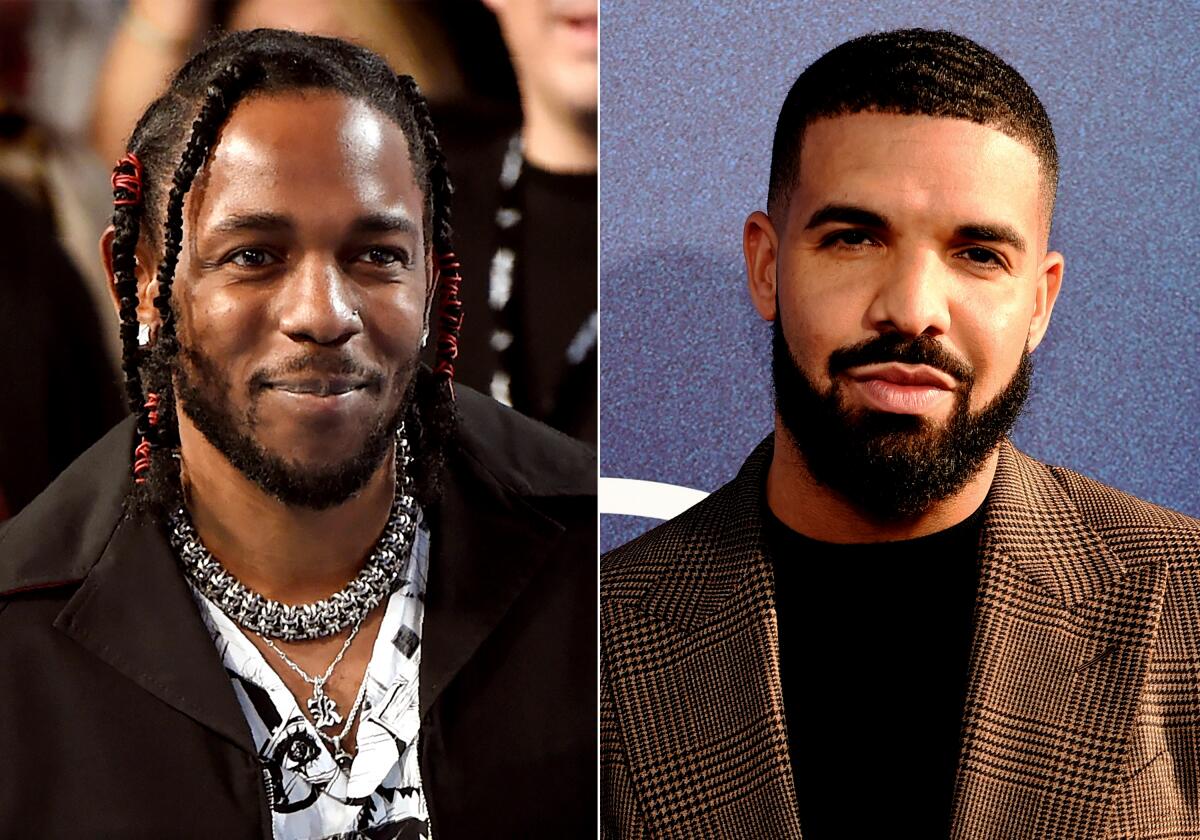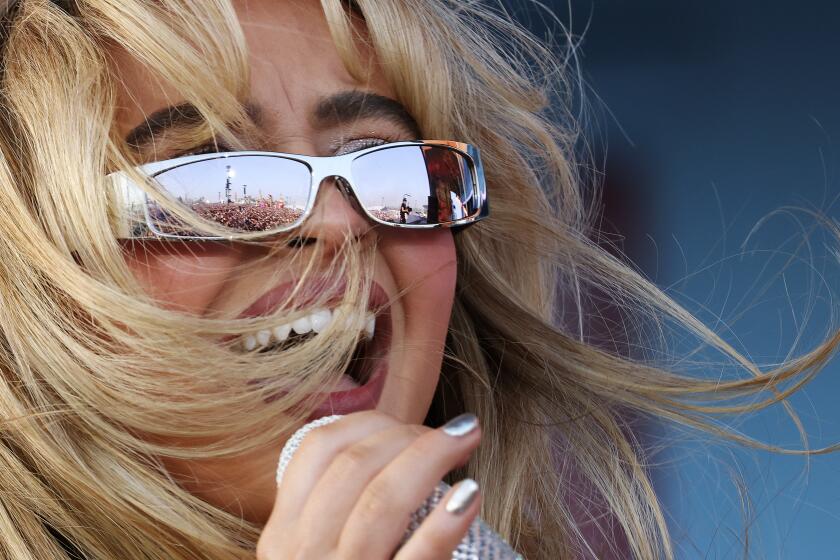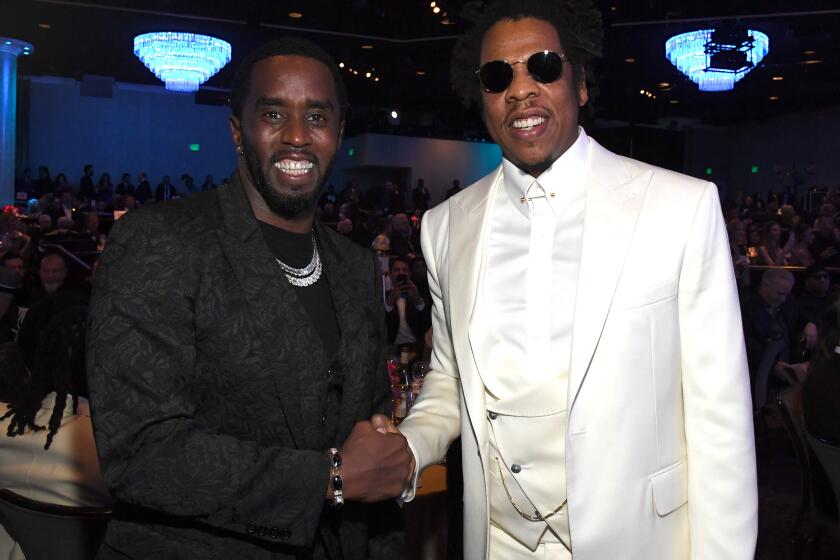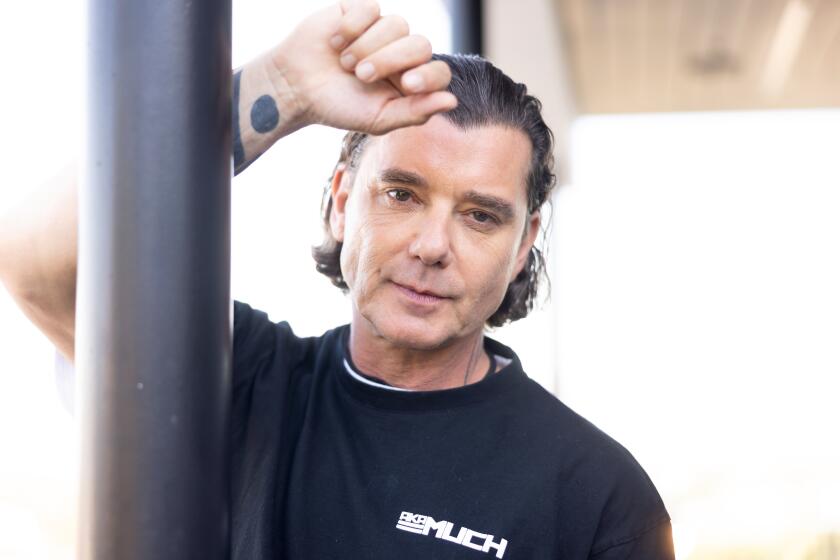Where do Kendrick Lamar and Drake go from here?

- Share via
After a weekend that saw two of hip-hop’s biggest stars trade increasingly ugly accusations of domestic violence and child sexual abuse, it’s all but official: Kendrick Lamar has triumphed over Drake in what many have deemed the most significant rap beef of all time.
The verdict was handed down early Monday by the self-appointed internet scorekeepers whose investment in the battle — as witnessed across YouTube, TikTok and every other form of social media given to feverish take-making — did as much as that of the rappers themselves to fan its flames.
But if Lamar can be said to have won, where does his victory leave him at age 36, a decade and a half into a career about which he’s sometimes seemed ambivalent? How does Drake’s defeat at 37 reshape the perception of invincibility he’s been building since the late 2000s? And what does it all say about hip-hop at a moment when the genre’s commercial dominance appears to be slipping?

There’s no doubt that Kendrick versus Drake — a long-simmering rivalry that exploded in late March when Lamar dropped a surprise verse on Future and Metro Boomin’s song “Like That” — has been good for rap’s position in a crowded attention economy. Countless stakeholders in the form have expressed anxiety lately regarding hip-hop’s slowing growth: Last year, for instance, only four rap LPs — by Travis Scott, Metro Boomin, Drake and the duo of Drake and 21 Savage — finished 2023 among the year’s 25 most-consumed albums. (Throw in records by SZA and Bad Bunny and hip-hop was still far outweighed on the list by pop and country thanks to blockbusters by the likes of Morgan Wallen, Taylor Swift and Zach Bryan.)
Before “Like That” debuted atop Billboard’s Hot 100 and logged three straight weeks at No. 1, the last rap song to spend that long of an unbroken streak there was “Rockstar” by DaBaby featuring Roddy Ricch way back in the summer of 2020.
Now, songs by Drake and Lamar occupy half of Spotify’s U.S. Top 10 and are widely expected to turn up in the upper reaches of next week’s Hot 100; not only that, but the beef put hip-hop back at the center of the pop-cultural conversation — see the sketch from this past weekend’s “Saturday Night Live” in which Dua Lipa plays a woman attempting to explain the intricacies of the feud to a pair of smiley morning-television hosts.
The London-born singer sounds great on her third studio LP. But is that enough in the age of the celebrity meta-narrative?
In a mind-share sense, at least, Kendrick versus Drake has also been a boon for the two men individually, both of whom have watched in recent years as they’ve been slowly (and naturally) pushed from hip-hop’s center by the generation coming up behind them. To put it in rock terms, these guys are approaching the status of a U2 or Bruce Springsteen: popular and well-respected legacy acts long since past their most important music. Yet this fight made their work feel newly alive; it made you believe those legacies are still being written.
Which of course is the tricky part. The beef began along familiar lines in “Like That,” with Lamar — the cerebral Compton native who won a Pulitzer Prize in 2018 for his musings on family, religion and Black heritage — taking objection to the idea that the more pop-oriented Drake belongs in the same league as him. (You can trace that notion back to J. Cole’s verse in a song from Drake’s 2023 “For All the Dogs” album in which he described himself, Drake and Lamar as “the big three” of modern hip-hop.)
But the feud quickly went deeper and more personal: In his song “Push Ups,” Drake mocked Lamar’s small physical stature and his supposedly being taken advantage of in business; he followed it up with “Taylor Made Freestyle,” which employed artificial intelligence to emulate the voices of Tupac Shakur and Snoop Dogg as hip-hop OGs goading Lamar into responding to Drake’s insults. Lamar did so in a track called “Euphoria” in which he called Drake a “scam artist” and accused the Canadian rapper of appropriating elements of Black American culture. Then, on Friday, everything went haywire as Lamar dropped another diss track, “6:16 in LA,” with the suggestion that someone on Drake’s team was leaking info to him. That led to Drake’s firing back hours later with “Family Matters,” in which he alleged that Lamar “beat on” his longtime romantic partner, Whitney Alford; almost immediately, Lamar released “Meet the Grahams,” the darkest chapter yet in the story: a six-minute catalog of Drake’s alleged misdeeds, including Lamar’s assertion that his foe has an 11-year-old daughter he’s kept secret from the world.

Before Drake could respond, Lamar dropped again Saturday with “Not Like Us,” a slick and festive — and instantly viral — party record that climaxes with what might be Lamar’s single most pointed criticism of a hip-hop artist whose enormous success is inseparable from his ability to identify ascendant styles and talent: “You not a colleague / You a f— colonizer.” (He also calls Drake and his crew pedophiles.) Weariness clearly audible in his voice, Drake finally came back late Sunday with “The Heart Part 6,” a gloomy track in which he rebuts Lamar’s claims about his history with young women and says that Lamar had fallen for the fake story Drake himself had planted about his having a daughter.
So: Grim stuff, almost all of it unverifiable by any of those who’d tasked themselves with adjudicating the beef. But if it’s hard to say how (or whether) any of this information aligns with either man’s real-life existence, the way each of them dispensed it seems likely to reshape our understanding of their musical personas.
“Meet the Grahams” revealed a level of spite we’ve never quite heard from Lamar, who framed his most recent album, 2022’s “Mr. Morale & the Big Steppers,” as an extended therapy session; “Not Like Us” shows he’s not finished (as the knotty “Mr. Morale” might have suggested) with catchy rap songs geared to the club.
From Paris Hilton playing cornhole at Vampire Weekend’s set to No Doubt’s reunion, these are the best things our team saw at Coachella 2024.
Indeed, it says something that the biggest commercial smash to come out of this feud is almost certain to be a Lamar song rather than one by Drake, whose hitmaking instinct recently carried him past the Beatles as the act with the most Top 5 singles in Hot 100 history. Key to Drake’s run on the charts has been his strategic mind and his flair for reading a room; nobody’s proven himself more skilled at anticipating what listeners will want before they even know. Yet the messiness of his approach in “The Heart Part 6” — his apparent misapprehension of an earlier Lamar lyric about sexual abuse and his insistence that he couldn’t possibly have preyed on girls because he’s “way too famous” (!?) — unsettles his image as the ultimate operator.
How, then, do Lamar and Drake — the latter of whose home in Toronto was the site of a shooting early Tuesday in which a security guard was injured, according to police — move on from this? Do they make new work within the parameters of what we’ve learned about them? Or do they treat the beef as a kind of off-the-record exhibition game, as Lamar says in “Meet the Grahams” he initially intended?
And what about the audience? Social media, where these diss tracks crash-landed into the discourse, has fundamentally changed the way we relate to pop stars; it’s what enabled the mindset by which fans feel as though they have a stake in their idols’ careers, be they rappers roasting each other or Taylor Swift roasting an ex. Like “The Tortured Poets Department,” Kendrick versus Drake has offered up an abundance of lore to chew on, to get behind, to divvy up into shards of parasocial identity. The problem with getting what you want, though, is that you might end up getting more.
More to Read
The biggest entertainment stories
Get our big stories about Hollywood, film, television, music, arts, culture and more right in your inbox as soon as they publish.
You may occasionally receive promotional content from the Los Angeles Times.













